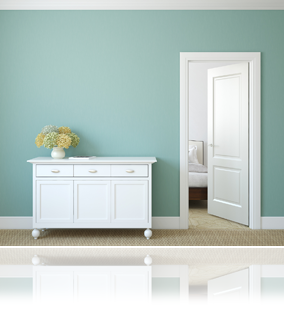Say you’re trying to sell a used car. Imagine that it’s a desirable make and model. The mileage is low. Overall, it’s in great condition… except, that is, for the body. Unfortunately, there are a few areas where the paint is scratched and there are a couple of dents and rust spots too.
Are you going to have trouble selling that car? Probably. That’s because potential buyers will have trouble seeing past the condition of the body and appreciating the true value of the vehicle.
The same thing can happen when you’re trying to sell your home.
Everything about it could be wonderful, but if the paint on the walls is faded in spots, and there are dents, scruffs and holes, buyers may notice those things more than the other more important features of your property.
So it’s a good idea to inspect your walls to make sure they look great.
There are numerous products available at your local home improvement store for repairing gouges and holes. It’s a relatively easy do-it-yourself job.
Keep in mind that applying a new coat of paint not only makes the walls look like new, but also tends to brighten up the entire room.

